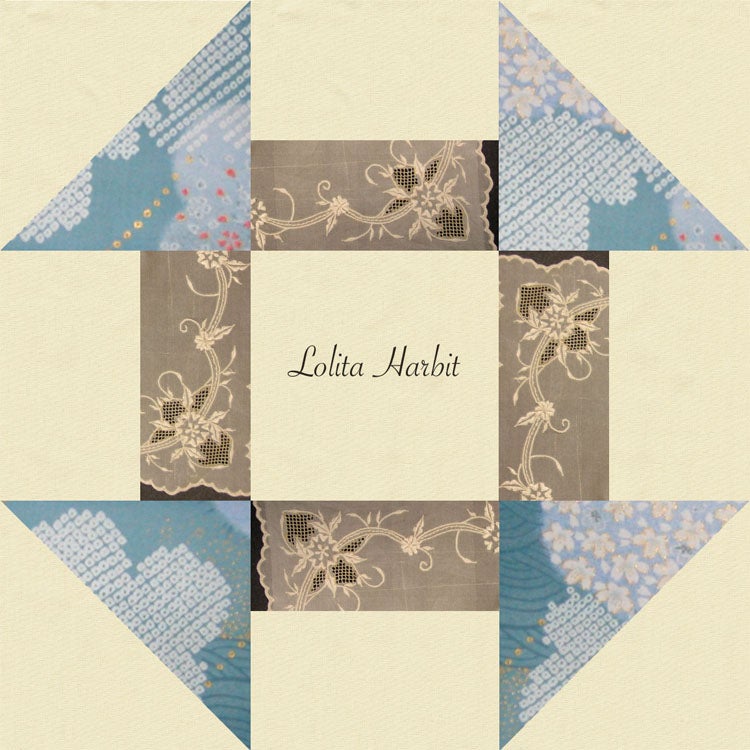Lolita Harbit
Continuing Studies
East Carolina University
Hand-embroidered centerpiece from the Philippines

Story of the block
This centerpiece is hand-embroidered in the Philippines, specifically in Taal, Batangas, where many hand-embroidered materials are produced. The cream-colored, delicate fabric is made from soft and fine fibers of mature pineapple leaves or jusi (raw silk).
The hand-embroidery process involves several steps:
- determining the use of the fabric and creating an appropriate design,
- stamping the pattern on the cloth with washable ink,
- embroidering the cloth with outline and satin stitches over the pattern,
- creating the lattice work through carefully pulling out the woof of the fabric with a needle and looping around the remaining warp fibers with quality thread to create tiny holes and eyelet lace-work effect,
- applying the finishing touches, followed by washing the cloth and mounting its sides on a wooden frame for stretching and sun drying. After drying, the material is ready for sale.
Fine embroidery is characterized by well-defined shapes on the pattern, smooth and even stitches, including embossed satin overlay and quality lattice work, and durable threads.
The unique and intricate artwork is an attraction to Philippine tourists and visitors. It comes in many creative forms and uses: tablecloth, napkins, placemats, bags and pouches, handkerchiefs, fans, shawls, blouses, dresses, gowns, and men’s shirts. These exquisite shirts (locally called “barong Tagalog”) are normally worn in weddings and formal occasions and have gained international recognition.
